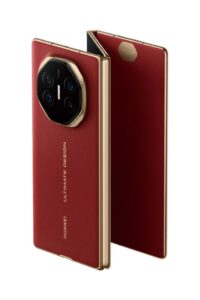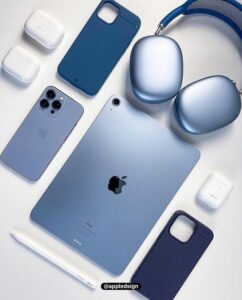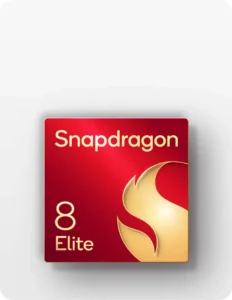How to Choose a Smartphone in 2025: The Ultimate Guide
How to Choose the Best Smartphone in 2025
Choosing the right smartphone in 2025 is more complex than ever, given the vast number of options available. Whether you are looking for a powerhouse device with cutting-edge specs or a budget-friendly phone that delivers excellent value, this guide will walk you through all the key factors to consider before making a purchase.
1. Identify Your Needs and Usage Patterns
Before jumping into specifications and brands, consider your primary smartphone use. Are you a gamer, a content creator, or just someone who needs a reliable device for calls and browsing? Identifying your needs will help you filter through the many options available.
Some common user profiles include:
- Power Users: Need top-tier processors, high refresh rate displays, and strong battery life.
- Casual Users: Prefer a balance between performance and affordability.
- Photography Enthusiasts: Require advanced camera systems with computational photography.
- Business Users: Need security features, productivity tools, and long battery life.

2. Operating System: Android vs. iOS vs. Others
The two main operating systems dominating the market are Android and iOS. Choosing between them largely depends on ecosystem preferences.
- Android (Samsung, Google Pixel, OnePlus, Xiaomi, etc.)
- Offers more variety in hardware and price.
- Customizable UI and access to multiple app stores.
- Better hardware choices, including foldables and gaming phones.

- iOS (iPhones)
- Seamless integration with Apple’s ecosystem (Mac, iPad, Apple Watch).
- Optimized performance and long-term software updates.
- Better app security and privacy controls.

In 2025, there are also emerging OS options, such as Huawei’s HarmonyOS and custom Linux-based phones, but they have limited app support.
3. Performance: Processor and RAM
A smartphone’s performance is mainly determined by its processor (SoC) and RAM. In 2025, flagship devices run on:
- Qualcomm Snapdragon 8 Elite
- Apple A18 Bionic
- Samsung Exynos 2500
- Google Tensor G4
For smooth multitasking and gaming, 8GB-12GB RAM is ideal. Budget phones may have 6GB RAM, but anything below that may result in performance issues over time.
4. Display Technology: Size, Refresh Rate, and Quality
With foldable and rollable phones gaining popularity, screen technology has improved significantly.
- OLED vs. LTPO AMOLED: Offers better color accuracy and deep blacks.
- Refresh Rate: 120Hz is standard, but flagship devices now support 144Hz for ultra-smooth scrolling and gaming.
- Screen Size: Compact phones (6.1”) vs. large-screen phones (6.7”+). Consider your hand comfort and usage.

5. Camera Capabilities: Megapixels Aren’t Everything
In 2025, camera quality is defined more by software processing and AI enhancements rather than just megapixels.
- Main Camera: 50MP-200MP with advanced computational photography.
- Ultra-Wide & Telephoto Lenses: Better zoom capabilities (periscope lenses) and wide-angle shots.
- AI Image Processing: Enhances night mode, HDR, and real-time video editing.
- Selfie Cameras: Under-display cameras are improving, offering a true full-screen experience.


6. Battery Life and Charging Speed
Battery efficiency has improved, but still, look for:
- 5000mAh+ battery for all-day use.
- Fast Charging: 100W-150W charging is common, enabling full charges in under 30 minutes.
- Wireless and Reverse Charging: Useful for charging accessories like smartwatches and earbuds.
7. Build Quality and Durability
Smartphones now come with titanium frames, ceramic backs, and Gorilla Glass Victus 3, making them more durable. Additionally, check for:
- IP Rating: IP68 (water and dust resistance) is standard for flagships.
- Foldable & Rollable Displays: If opting for these, ensure they have tested hinge durability.

8. Connectivity and Future-Proofing
- 5G & Wi-Fi 7: Ensure the phone supports the latest wireless connectivity.
- Satellite Communication: Some phones now feature emergency satellite connectivity.
- UWB (Ultra-Wideband): Useful for precision tracking and digital keys.
9. Software Updates and Security
- iOS devices typically receive 5+ years of updates.
- Google and Samsung now offer 5 years of Android updates.
- Security Features: In-display fingerprint scanners, Face ID, and AI-powered fraud detection.
10. Pricing: Flagship vs. Mid-Range vs. Budget
- Flagships ($1000-$1500+): Best cameras, processors, and premium features.
- Mid-Range ($400-$800): Great value with high-end features minus a few premium touches.
- Budget Phones (<$400): Ideal for basic use, often with compromises in camera and performance.
11. Special Features to Consider
- AI Integration: Phones now offer on-device AI assistants for enhanced productivity.
- Foldable & Rollable Displays: For those wanting futuristic form factors.
- Stylus Support: Found in Galaxy S Ultra models and productivity-focused phones.
- https://www.samsung.com/in/
- https://travelworldgo1.blogspot.com/
Conclusion
Choosing a smartphone in 2025 depends on your needs, budget, and ecosystem preference. With advancements in AI, battery tech, and displays, the smartphone landscape is evolving rapidly. Prioritize the features that matter most to you, and you’ll find the perfect device that suits your lifestyle.


Hii bro i want a smart phone under 30000 please suggest me